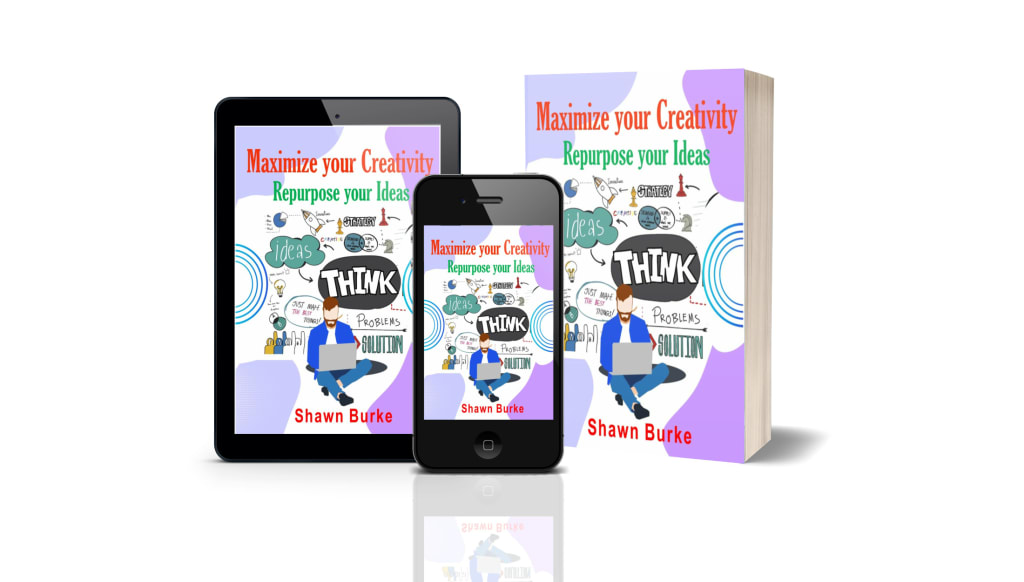Where Big Ideas Fit in Modern Life
We are led to believe by various programs and films that individuals who are successful in life are those who are creative and have huge ideas.

Even the most basic ideas, which take complex issues or ideas and demonstrate sufficient ability to simplify them, have a way of elevating average individuals to the status of superstars.
An onslaught of “Think Big” posts on Facebook, tweets, and Pinterest boards are aimed at getting us to expand our thinking. The idea that if we do not think large, we are destined for a life of mediocrity has, for some reason, managed to gain widespread acceptance.
Although this is somewhat of an exaggeration of the situation, there is a lot to be said about the importance of coming up with strong ideas in the business world, regardless of whether the company in question is yours or someone else’s.
Ideas do not have to be complicated in order to be powerful. Look at something like steam. Who would have guessed that the straightforward process of heating water to the point where steam is produced would one day be linked to the generation of power for an engine and lead to the development of train travel using steam engines?
Influential Thinkers
People who have ideas, particularly excellent ideas, frequently become the center of attention for those in their immediate surroundings. They are praised for being influential thought leaders and “doers.” People who spend their days doing manual labor in a factory or working in the same low-skilled job day in and day out frequently have the idea that they could get out of their miserable situation if they would just hold out until they had that one brilliant idea that would make everything better. This is a common misconception.
There is a chance that you can spot yourself in this photo.
It is the concept for a trivial item with a price tag of one dollar, but the prospect of selling it to millions of customers would make your arm bleed. The idea for the board game, the concept for the website, or the invention of the household appliance is what would make you wealthy and renowned at the same time.
However, it is not how big ideas come to be.
The production of new ideas can be viewed as both an art and a science. But above all else, the difference between the average person and the rich and famous who were fortunate enough to be struck by their defining concept is that the rich and famous put their ideas into action. This is the distinction between them and the average person.
Those ideas did not all turn out to be successful. The wealthiest and most famous people in the world have, in point of fact, been through more unsuccessful business ventures than any of the rest of us. However, they did not stop acting until they found a solution that worked.
Where Big Ideas Fit in Modern Life & Business
The production of new ideas has become such a rich source of money that a whole industry has developed around the distribution of productivity software in response to this trend.
They can be as simple as a notepad or as complex as dictation machines and include a wide variety of applications that can connect to all of your electronic devices through the cloud. Their primary purpose is to ensure that you never lose another idea.
But what are the factors that led to the gradual realization that ideas are the essential components in the construction of wealth? They accomplished this through contributing to the growth of local businesses.
What does it mean to you to live a prosperous life?
A company that runs well with relatively little effort from you…
More money from a larger number of clients…
Getting advanced in your career and being acknowledged by your employer as a strong contributor are both important factors in…
Earning money through the production of something, such as a book or other work of art…
Ideas, in whatever form they take, are what enable us to rethink our responsibilities in the workplace and regain control of our company. Society as a whole moves forward with each technological advance, and those advancements are made to facilitate easier and more productive ways to “get stuff done,” avoid pain, fix what is broken, make life easier, and any other topic that a business is built around. Society moves forward with each technological advance.
We are fortunate to be a part of a generation in which ideas are acknowledged for what they truly are: solutions that make life more enjoyable. People no longer just assume that someone who thinks a lot “lives in their own little world” or that they are “somewhere in the clouds” when they observe them.
One of the people who contributed to the formation of our conception of the people behind ideas is Albert Einstein. But influential physicians are not the only ones who have altered the way people around the world think about concepts.
All of the advertising men who worked in the 20th century and created advertisements to sell us the houses, vehicles, and clothes that we wear were successful because they had ideas and transformed those ideas into products.
While certain personnel were necessary for the development of the product, others were required to devise innovative and fruitful ways to advertise and sell the product. As a result, sales and marketing departments emerged as indispensable components of modern businesses. One may make the case that this was the actual beginning of the practice of ideas being implemented merely for the sake of generating revenue.
When first conceived, ideas concentrated on the production of products and services; as time went on, however, people began to find value in ideas in their most basic form.
Ideas were mental constructs that, once committed to paper or displayed digitally, constituted an integral element of the marketing and sales process. In the case of well-known brands, marketing efforts were focused on the concept behind the brand rather than the actual good or service being sold. A pair of jeans was a pair of jeans, but a pair of jeans from Tommy Hilfiger was something different — it was a mark of style and prosperity.
If ideas are concepts that contribute to the progression of society while simultaneously creating business and profit, then how do we come up with them?
How to Come Up with New Concepts
A nudge: ideas can be like buses; sometimes there are none for a long time, and then suddenly three come together. However, when you actively participate in idea generation, it is like owning your own car.
And not just any automobile; it had to be a Rolls Royce; it had to be large; it had to be a symbol of a notion that extended far beyond the simple components that it was composed of; and it had to be able to capture the imagination of a large number of people.
There is a wide variety of approaches to the process of idea generation; however, for the sake of this study, we are going to concentrate on only two of those approaches:
Brainstorming
The process of coming up with new ideas frequently involves “brainstorming.” When conducted in the appropriate manner, a brainstorming session can be quite productive; on the other hand, it can be an enormous waste of time when not conducted properly.
If you think that means the ideas that result from your brainstorming session are going to be so far off the wall that they will be useless to you in the real world when you get back to work, consider this: there was once a time when people thought it was a ludicrous notion that we would all be able to fly on a plane, that someone would travel in outer space, or even that we would be capable of communicating with someone on the other side of the planet within seconds at most. However, But the seed for each of these crazy concepts was planted by others who had the audacity to dream them up.
The activity of brainstorming is best done in a group setting. Because of the way in which our brains generate distinct associations, it is effective. It turns out that it makes sense to think in ways that are radically different from one another. When one person suggests ideas that should be taken into consideration, it often prompts thoughts in the minds of the other people present that are diametrically opposed to the initial concept, but which may be simpler to put into practice.
By doing things in this way, a form of free association takes place, which results in the formation of many varied concepts. When a separate member of the team applies their own unique perspective to an idea, even ideas that were initially proposed as a joke can contain the germ of a more practical notion.
In order to have a fruitful brainstorming session, there is one thing that is very necessary to realize: common sense is the adversary.
Toss off all kind of common logic and pretend it was never even a thing.
When it is let into the brainstorming session, it has a tendency to slow down the production of new ideas. People start questioning their own judgment and trying to determine whether or not their proposal would be successful. They get the impression that they should not suggest it, so they strain their minds to think of something else to say instead. They did not offer anything at the designated time, and the brainstorming session ended without producing any useful ideas.
A consequence that is equally ineffectual from the application of common sense is when one person generates thoughts and another begins to analyze the situation.
It is important to set a time limit for brainstorming sessions; this will make participants feel more inclined to share their thoughts in order to keep the whiteboard or page from becoming empty. People have a natural aversion to the prospect of staring at a blank paper, which makes it difficult for them to refrain from doodling or writing on it.
After the meeting, it is necessary to take notes and filter through the ideas that were created so that they can be arranged in some type of order, with the ideas that are most actionable placed at the top of the list and the ideas that are least actionable placed at the bottom. Ideas that can be put into action are utilized to create task lists, which are then broken down into more manageable subtasks. This process continues until what was first only an idea becomes a tangible plan of action.
Mind Mapping
Mind-mapping is a technique that is quite versatile and is very similar to brainstorming. Individuals or groups might benefit from using mind-mapping to generate new ideas for a problem or situation. It is possible to use it as the tool that is used to collect people’s ideas during a brainstorming session, or it is possible to only use it for individual brainstorming.
The concept of mind-mapping proposes that one should add ideas to a website or a software program without giving any consideration to how those new ideas will fit in with the information that is currently present. They are placed in a haphazard manner, and throughout the course of time, they are rearranged or have lines created to connect concepts or activities that are pertinent to one another.
When you transfer the concepts from your head onto the mind map, two things take place, which is one of the many advantages of using mind mapping.
1.
When you stop focusing so much on the thoughts that you now have, you are able to view those ideas in a brighter light against the backdrop of the other concepts that you place on the mind map.
2.
Your mind begins to generate new concepts — it is almost as if it is trying to fill the void created by the other people’s ideas that have been dumped into it.
More ideas emerge as a result of discovering new connections between concepts. Again, the tasks and subtasks that are formed take the ideas from the realm of concepts into the realm of tasks and subtasks.
Once more, common sense is the enemy in this situation. Results will not be achieved if you keep pausing to consider whether or not every concept will work, or how it will work. The plan is to first write everything down and then look for links between the different ideas.
When to Apply Your Senses Commonly
After the results of any brainstorming or mind-mapping sessions have been compiled, it is time to apply some common sense to the situation. After that, it is time to look through all of the ideas and locate the ones that can actually be turned into something that can be done.
That is not to argue that any ideas that continue to be “airy fairy” are destined to end up in the garbage — quite the contrary. Every thought needs to be recorded. Have you ever had a thought that was just beyond your grasp at the time? One that seemed to want to take form in your head, but simply refused to do so? The answer that was probably recommended to you was that you give it some thought during the course of the night.
A solution to an issue will frequently present itself at a time when we are giving it the least amount of mental energy. The passage of time, developments in technology, or shifts in societal norms could make some of the items on that list of ideas that initially appeared to be impossible much easier to implement. You should never dismiss an idea out of hand.
About the Creator
Estalontech
Estalontech is an Indie publisher with over 400 Book titles on Amazon KDP. Being a Publisher , it is normal for us to co author and brainstorm on interesting contents for this publication which we will like to share on this platform
Enjoyed the story? Support the Creator.
Subscribe for free to receive all their stories in your feed. You could also pledge your support or give them a one-off tip, letting them know you appreciate their work.






Comments
There are no comments for this story
Be the first to respond and start the conversation.